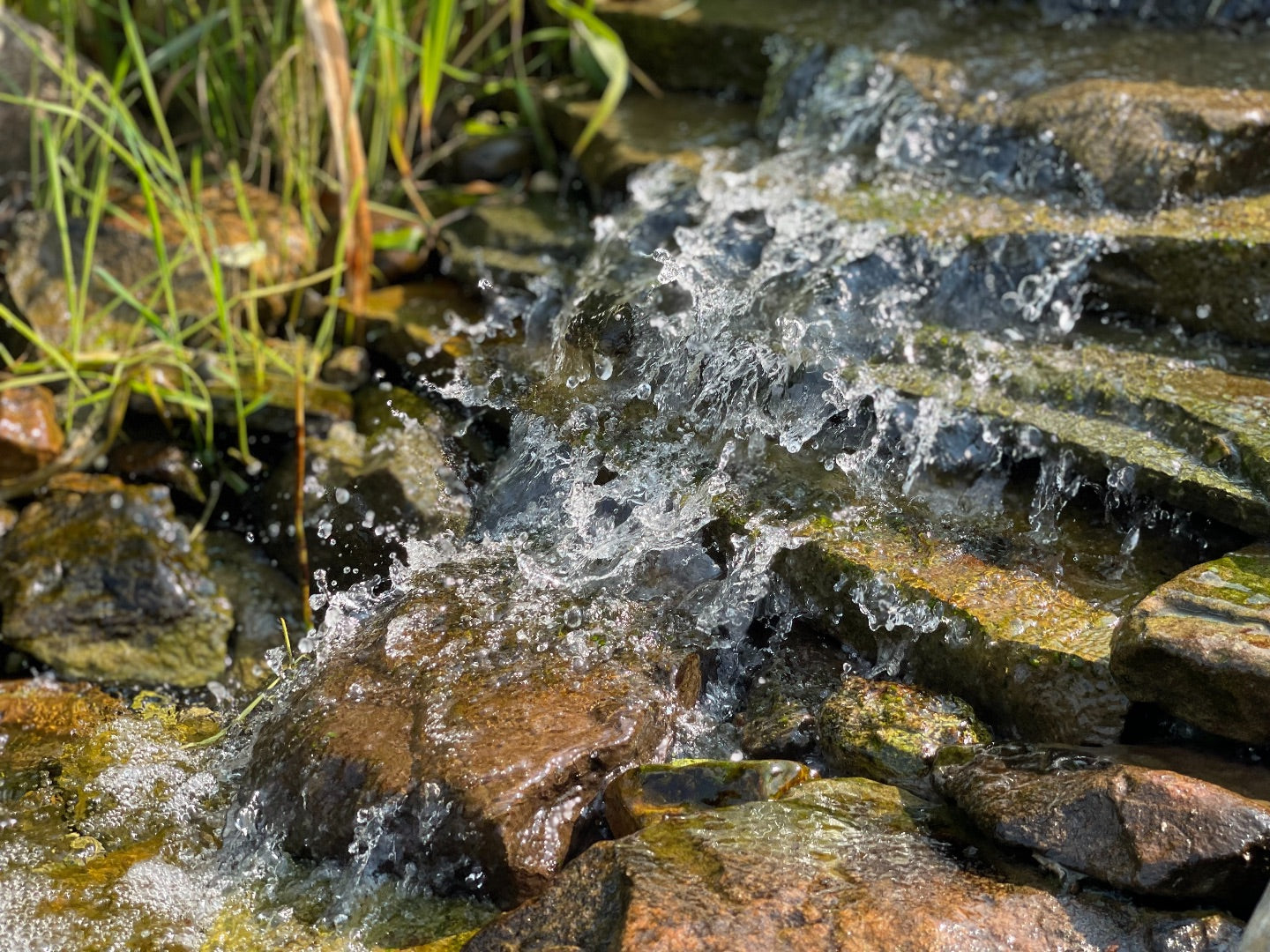What would it be like to step into a vibrant world where the busyness and chaos of life fall to the wayside? As you walk, you notice the warmth of the sun and the beautiful song of birds as you commute to work. Along the way, a fragrant aroma fills the air. It is the treasured lilacs that bloom only in springtime. The report you are expected to deliver to your boss this morning does not cross your mind as you are consumed by the scene around you. You have joy, you have peace, and you are at ease. You are truly immersed in the present moment, embracing all of the beauty and serenity of the natural world around you.
What is mindfulness?
Mindfulness is a mental practice characterized by being fully present and engaged in the present moment, without judgment or distraction. It involves paying attention to thoughts, feelings, bodily sensations, and the surrounding environment. The goal of mindfulness is to reduce stress, enhance well-being, and promote a greater sense of clarity and perspective in daily life. It has been found to greatly impact one’s mental, emotional, and physical well-being.
Mindfulness is a vital skill to cultivate in everyday life. It leads us into a deeper and more colorful experience of life and the nature that surrounds us. When we are not trapped in the ruthless cycle of hurrying from one thing to another, we get to reap the benefits of being completely in the moment. Improved mental health, stress reduction, enhanced concentration, improved relationships, and enhanced physical health are among its many benefits.
While mindfulness can be practiced anywhere, at any time, there is a strong connection between mindfulness and nature. Simply being in nature pulls us out of our inward trance and beckons us to consider the present moment by engaging all of our senses. With sights, sounds, smells, textures, and tastes that captivate our attention, nature is intentionally designed to stop us in our tracks. Additionally, nature exudes a calming influence over our mind, body, and soul.

The benefits of nature-inspired mindfulness
Stress reduction and relaxation
Mindfulness leads to stress reduction by fostering present-moment awareness and acceptance. By tuning into the present moment without judgment, you can break free from the cycle of stress and anxiety fueled by past regrets or future worries. Through mindfulness, individuals learn to observe their thoughts, emotions, and bodily sensations without getting caught up in them, allowing for greater emotional regulation and decreased reactivity to stressors. This non-reactive stance promotes a sense of calmness and clarity, activating the body's relaxation response and reducing physiological markers of stress such as heart rate and muscle tension.
Improved mental clarity and focus
Mindfulness trains the mind to remain present and attentive to the task at hand. By developing the ability to anchor their attention to the present moment, mindfulness practitioners cultivate a heightened awareness of their mental processes, enabling them to recognize and let go of unproductive thoughts or worries that may cloud their clarity and concentration. With regular practice, mindfulness strengthens the neural pathways associated with attention and concentration, enhancing cognitive function and facilitating a state of mental clarity where one can engage with tasks more effectively and efficiently.
Enhanced emotional well-being
By cultivating present-moment awareness, mindfulness helps individuals recognize and regulate their emotional responses more effectively, reducing impulsivity and reactivity. This increased emotional intelligence enables individuals to navigate life's ups and downs with greater ease, fostering a sense of inner peace, contentment, and emotional stability. Additionally, mindfulness practices promote self-compassion and empathy, strengthening connections with others and enhancing overall emotional well-being.
Deepened connection with the natural world
Mindfulness deepens your connection with the natural world by inviting you to engage with your surroundings in a more intentional and present manner. When you practice mindfulness outdoors, you become attuned to the sights, sounds, smells, and textures of nature, allowing you to fully immerse yourself in the present moment. Whether you are walking through a forest, sitting by a river, or gazing at the stars, mindfulness opens your senses to the beauty and wonder of the natural world, fostering a profound sense of awe and appreciation. As you cultivate a deeper connection with nature through mindfulness, you begin to recognize the interconnectedness of all living beings and develop a sense of reverence for the Earth's ecosystems.

How to cultivate nature-inspired mindfulness practices
The basics of practicing mindfulness are easy to learn and can be practiced by anyone anywhere. While there is no set of rules, simply paying attention to your breath, non-judgmentally observing your thoughts and emotions, and being aware of your bodily sensations can anchor you to the present moment. However, the serenity and rhythms of nature can not only aid your pursuit of mindfulness but also foster a deeper connection to the natural world.
Waking and sleeping with the sun
Long ago, our ancestors had no alarm clocks. There was no way of telling time other than by the position of the sun. Work and play could not be done after it was set, either. The sun ruled the rhythms of mankind for thousands of years. While our minds may have forgotten this fact, our bodies have not. Waking with the sun and resting when it is set enhances your circadian rhythm, leading to increased energy levels, improved mood, and an enhanced connection with and appreciation for nature. Waking and resting with the sun may help you to notice the sunrise and sunset, taking in the fullness of their allure.
Mindful walking in nature
Journeying in nature, whether in a remote forest or your nearest city park, has immense mindfulness benefits. Intentional movement can help slow your mind, while simultaneously opening your mind up to the scene around you. However, it is important to leave your phone behind, or at least silence it. Distractions in the digital world can be detrimental to cultivating mindfulness. As you walk, you will experience an abundance within nature that may be just outside your home. Read this article for some ideas on how to practice mindful walking in nature.
Engaging the senses in nature
Engaging the senses in nature is a powerful way to enhance mindfulness and deepen your connection with the natural world. Each sense offers a unique opportunity to fully immerse yourself in the present moment and experience the richness of your surroundings. As you walk through a forest, you can listen to the symphony of birdsong and rustling leaves, feel the texture of tree bark beneath your fingertips, inhale the earthy scent of the forest floor, and observe the dappled sunlight filtering through the canopy above. By intentionally tuning into your senses and embracing the sensory experience of nature, you can cultivate a profound sense of presence and appreciation for the beauty and wonder of the world around you.
Integrating mindfulness into daily routines
Even without getting lost deep in nature, you can still bring nature-inspired mindfulness into your daily routine. Consider these ideas.
Mindful morning rituals
After waking with the sun, take a moment to check in with yourself. Observe how rested you feel. Is your body rejuvenated? Or do you feel sore in areas? Spend a few minutes to reflect on something you are grateful for, whether in a journal or just internally. As you brush your teeth, wash your face, or shower, feel the temperature of the water and how your skin interacts with it. Think about the journey that water took to make it to your faucet. As you continue throughout your morning, give attention to how your emotions are impacted by what you experience.
Bringing mindfulness into everyday tasks
Whether you are replying to emails, washing dishes, doing yard work, or any other everyday task, you can incorporate mindfulness into your routine. Focus on your breathing, feel the inhale and exhale of your breath. Give special attention to the moment of stillness between breaths. Does it remind you of the rhythmic lapping of waves upon a beach? Turn your attention to your body. Notice the attitude you are in if you are still or pay attention to how your weight shifts as you move. Feel your muscles. Are they tense or are they relaxed? Imagine your body as a tree, dancing in a light breeze. Each action has an equal and opposite reaction.

Creating mindful spaces at home and work
Spaces have a profound impact on how we perceive and interact with the world around us. Create spaces that not only aid your mindfulness habit but bring nature into your home. Filling your home or workspace with green plants can foster a connection with nature, even if you are not able to escape the indoors. Indoor plants have a plethora of benefits beyond mindfulness. Use natural elements, like wood, to furnish your space. Couple your space with creating a rhythm of putting your screens away and relishing in the indoor garden you have created.
Mindful eating with natural foods
Mindful eating starts before you take your first bite. What you eat has the power to either draw you deeper into your connection with nature or further away from it. Eating heavily processed foods that are unrecognizable to what they originated as can pull you away from the natural world. Whereas, consuming real, whole foods like vegetables, fruits, dairy, and meat beckons you to reflect on how that ingredient reached your plate. Before every meal, pause for a moment of gratitude and internally tell your stomach that you are about to eat. With each bite, observe the texture, taste, and temperature of your food. Take time to chew it thoroughly. As you slowly make your way through your meal, pay attention to how your appetite changes. When you are full, stop eating and take another moment of gratitude for the experience of fullness.
Conclusion: Practicing nature-inspired mindfulness
In a world inundated with distractions and demands, the practice of nature-inspired mindfulness offers a sanctuary of serenity and connection. As we immerse ourselves in the present moment, embracing the beauty and wonder of the natural world, we awaken to a vibrant tapestry of sights, sounds, and sensations that ignite our senses and soothe our souls. Mindfulness, characterized by being fully present and engaged without judgment, is a transformative practice that holds the power to reduce stress, enhance mental clarity, and foster emotional well-being. By cultivating mindfulness in everyday life, we deepen our connection with nature, attune our senses to the rhythms of the Earth, and rediscover the profound interconnectedness of all living beings. Nature-inspired mindfulness opens our hearts to the boundless beauty that surrounds us and cultivates a sense of gratitude and reverence for the natural world. Together, let us honor the wisdom of nature and cultivate a deeper sense of presence and purpose in our lives.



